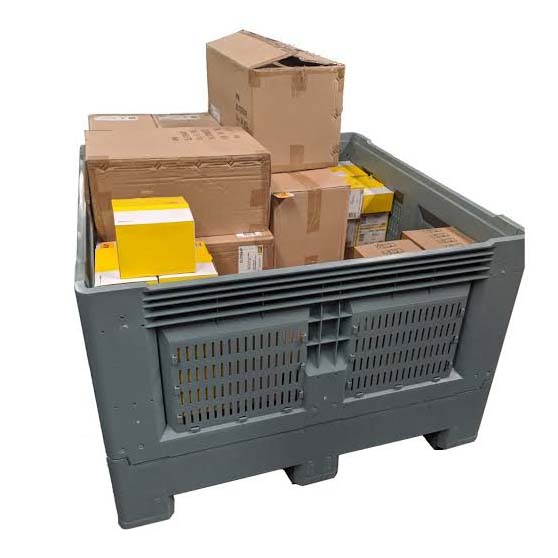
Image: EcoPallets
At Australia’s most isolated mining camps—where every square metre is precious, and logistics command daily budgets—the new Eco‑OzCrate‑2 feels more like a revelation than a container. Designed by EcoPallets in WA, this foldable bulk crate flips the usual storage logic on its head: when you don’t need it, crush it down.
Upfront, here’s why this matters now.
What Makes the Eco‑OzCrate‑2 Kick In Utility

Source: Eco Pallets
- Space-smart design: Unfolded, it spans about 1.16 metres square with a 785 mm height. Collapsed, it shrinks to just under 300 mm high. That’s over a 60% reduction in volume.
- Rugged capacity: Despite being collapsible, it holds a breathtaking 3 tonnes static load, and up to 1 tonne under movement.
- Smarter handling: Designed for forklifts and pallet jacks, it slots into modern mine layouts with ease.
Imagine armed with a storage bin that folds flat, stacks neatly, and keeps gear tidy—without hogging precious cargo space on supply trucks.
A Fresh Perspective: Storage That Thinks Like the Camp
Most storage tells you what it is. The Eco‑OzCrate‑2 asks a better question: when do I have space for more? In remote camp corridors often measured in centimetres, folded crates enable walkways to stay clear, office doors to open fully, and storerooms to stay manageable even during peak resupply periods.
One camp manager described seeing them in the field: crated supplies piled nicely in less than a meter, then box-shaped when needed—“it’s like storage that breathes.” Suddenly, ‘static bins and chaos’ becomes ‘folded practicality and calm’.
Built for the Lived Mining Experience

Source: Eco Pallets
Say goodbye to beat-up timber slats and splintered bins. These crates are engineered for outback environments—dust, blows, groutpunched floors, mud rains—without rusting, rotting or going brittle.
Rugged, yes. But the smart use of plastics also aligns with sites aiming to reduce timber use and improve recycling goals. One mining consultant noted: “It’s rare to see innovation that handles both practicality and sustainability—this checks both boxes.”
Also Read: Speakman Wants AI in Schools. Here’s What That Means for NSW
More Than Storage: A Logistics Multiplier
Smaller trucks can now transport beaten-down crates rather than bulky empty boxes. That means fewer loads, lower transport costs, and less environmental mileage. What saved a few percentage points in efficiency before becomes a visible line item in remote logistics budgets.
Staging stores, camp maintenance gear, spare parts—these Linux-like modular crates shift supply logic from ‘what fits’ to ‘how we make it fit better’.
Standout Features Worth Noting
| Feature | Why It Matters |
| 4-way forklift access | Seamless fit in rugged site layouts |
| 750 L volume | Holds more than a crate, halves tipping time |
| 53 kg weight | Light enough to handle, tough enough to last |
| Minimal collapsible height | Saves cargo deck space and yard inconvenience |
| Optional lid type | Keeps dust out in dusty camps |
Voices from the Field
- Storage Attendant: “I unfold one crate, stack it in a corner, and it stays neat.”
- Truck Loader: “Collapsed boxes loaded four tiers high cut route runs by nearly half.”
- Sustainability Officer: “Less timber, less waste—plus they’re mine-grade tough. Win‑win.”
Why the Timing Is Key
Mining workloads are no longer limited to commodities. Camps now deal with digital forecasting, machine learning, and tight supply chains. Everything that saves just a bit of space, time, or fuel becomes more than convenience—it becomes capital.
At the same time, remote workers expect better looking, safer, and more humane spaces. A neatly stacked crate might seem small until you see a happier camp corridor with smiling crews instead of accidents.
The Final Fold: A Quiet Step Toward Smarter Mining Camps
The Eco‑OzCrate‑2 isn’t tech flashy like autonomous trucks or drill rigs. But its strength lies in quiet improvement—tactical logic for every square metre, logistical edge in remote land, sustainable thinking for future camps, and a smarter way to store, transport, and manage.
For mining teams building homes miles from civilization, this crate softens the edges of isolation. It’s storage that adjusts to work, not the other way around.

